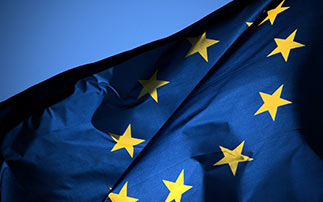Last week, our article was about the launch of the EU interregional cooperation program, INTERREG Europe. This week’s article is about the new characteristics of this program.

25 August 2021
+33(0)1 42 54 60 64 | contact@welcomeurope.com
Last week, our article was about the launch of the EU interregional cooperation program, INTERREG Europe. This week’s article is about the new characteristics of this program.
Improving the cohesion policy
As explained in the previous article, interregional cooperation’s objective is essentially about improving policies in the public administrations of the EU Member-states, the exchange of best practices, and capitalization and integration of these best practices in European regions.
What is new in the INTERREG Europe program is that it focuses primarily on cohesion policy. Indeed, it is explicitly specified in Article 2 of the EU regulation 1299/2013 that interregional cooperation aims to “reinforce the effectiveness of cohesion policy”, regarding both growth and employment goal and territorial cooperation goal. Therefore, INTERREG Europe can be defined as “a program for the other programs.”
This precision has an important impact on the use of the funds: at least half of the regions involved in the European INTERREG program will have to focus on improving policies related to structural funds.
The application form was also built to satisfy this new requirement. The partners are asked to specify which public policies they want to improve, and if these public policies are related or not to the ERDF or ESF.
2 types of actions
The new program will be divided into two types of actions: the platforms and the projects.
Platforms are a tool that will strengthen the capitalization and the exchange of experiences by disseminating the benefits of INTERREG projects to regions which are not necessarily partners. A platform for each thematic objective of the INTERREG Europe program will be set up (research and innovation, competitiveness of SMEs, low-carbon economy, environment and resource efficiency). These platforms will help for instance regions of Europe to find particular public policy solutions through a database or to find partners on specific topics. €15 million will be dedicated to these platforms, which will be financed by the ERDF at 100%. They will start running at the end of 2015.
Regarding projects, the main new feature is that they will be divided into two phases:
– Phase 1 (1 to 3 years), is dedicated to the exchange of experience in itself, as in the previous programming period. An action plan will have to be set up eventually.
– Phase 2 (2 years), is devoted to the monitoring of the action plan. INTERREG Europe will fund the monitoring of actions and not their implementation as such. The regions will have to use other local, regional or national funds to implement these actions, results of the exchanges made in phase 1. However, some pilot actions, if justified, may be funded by INTERREG Europe.
Other new characteristics
The other new features of the program are the following:
– Partners: as the program is primarily dedicated to public administrations, the public organization responsible for the public policy targeted in a project (managing authority, intermediate body), must necessarily be involved in this project. If it cannot be directly involved as a partner, it will have to provide a letter of support in order for the project to be eligible.
– A stakeholder group by region will be set up. It will be made of all major actors involved in the public policies targeted by the projects, so that they will benefit to all stakeholders. These groups will not be funded by the INTERREG program.
– The following structures will be eligible for the program: public authorities, public law bodies, and also private non-profit organizations (such as chambers of commerce, clusters, trade unions, depending on the country). The maximum co-financing rate will depend on the status of these organizations: 85% for the first two types of organizations, and 75% for private organizations, when they come from EU member states. The national managing authorities will be in charge of controlling the eligibility of the structures participating in a project.
– Finally, the first level control will also be carried out by the national managing authorities. It will be either centralized or decentralized depending on the States. Therefore, before starting a project, it is important to verify which type of control has been set up in the State of the applicants (information available here).

25 August 2021

